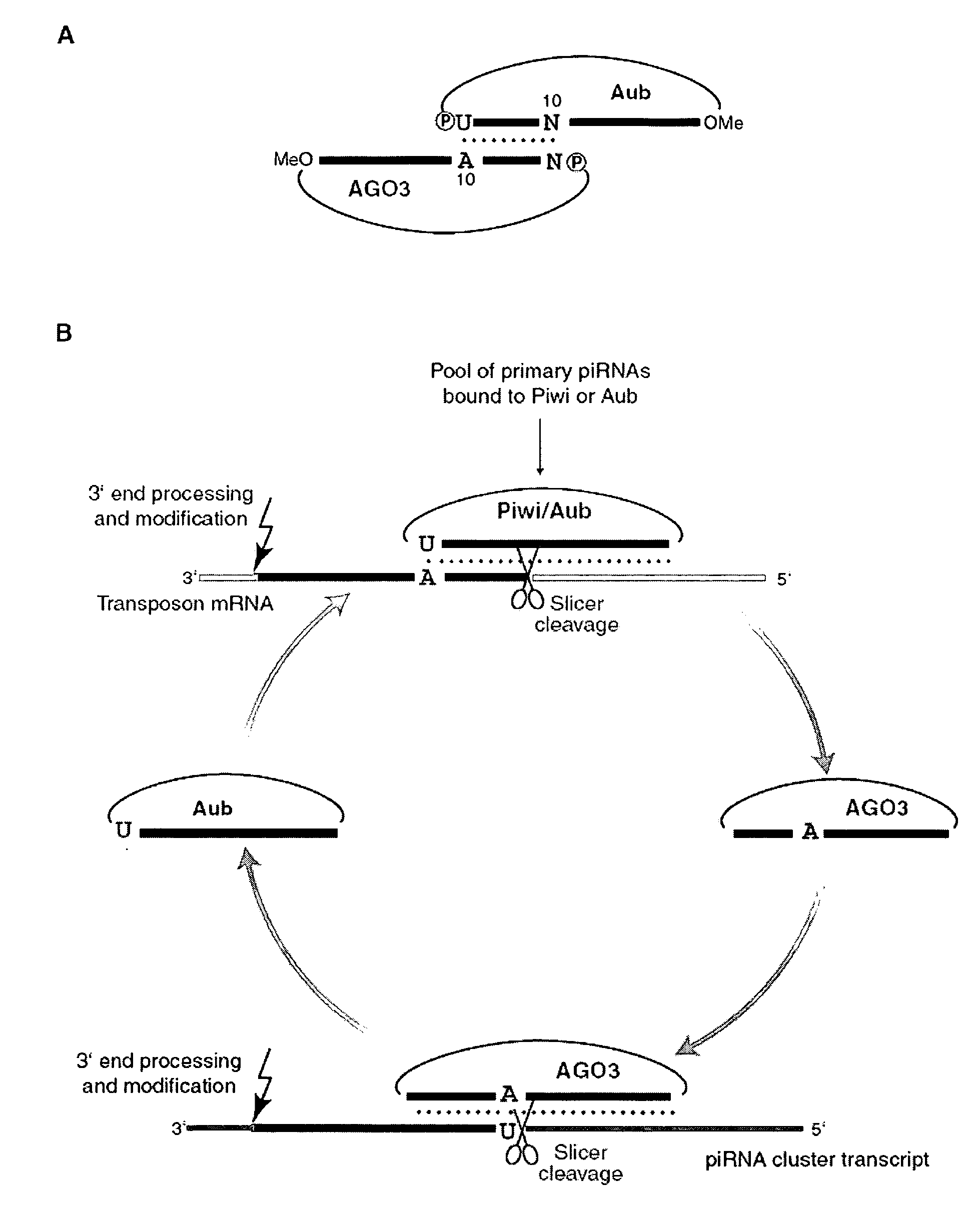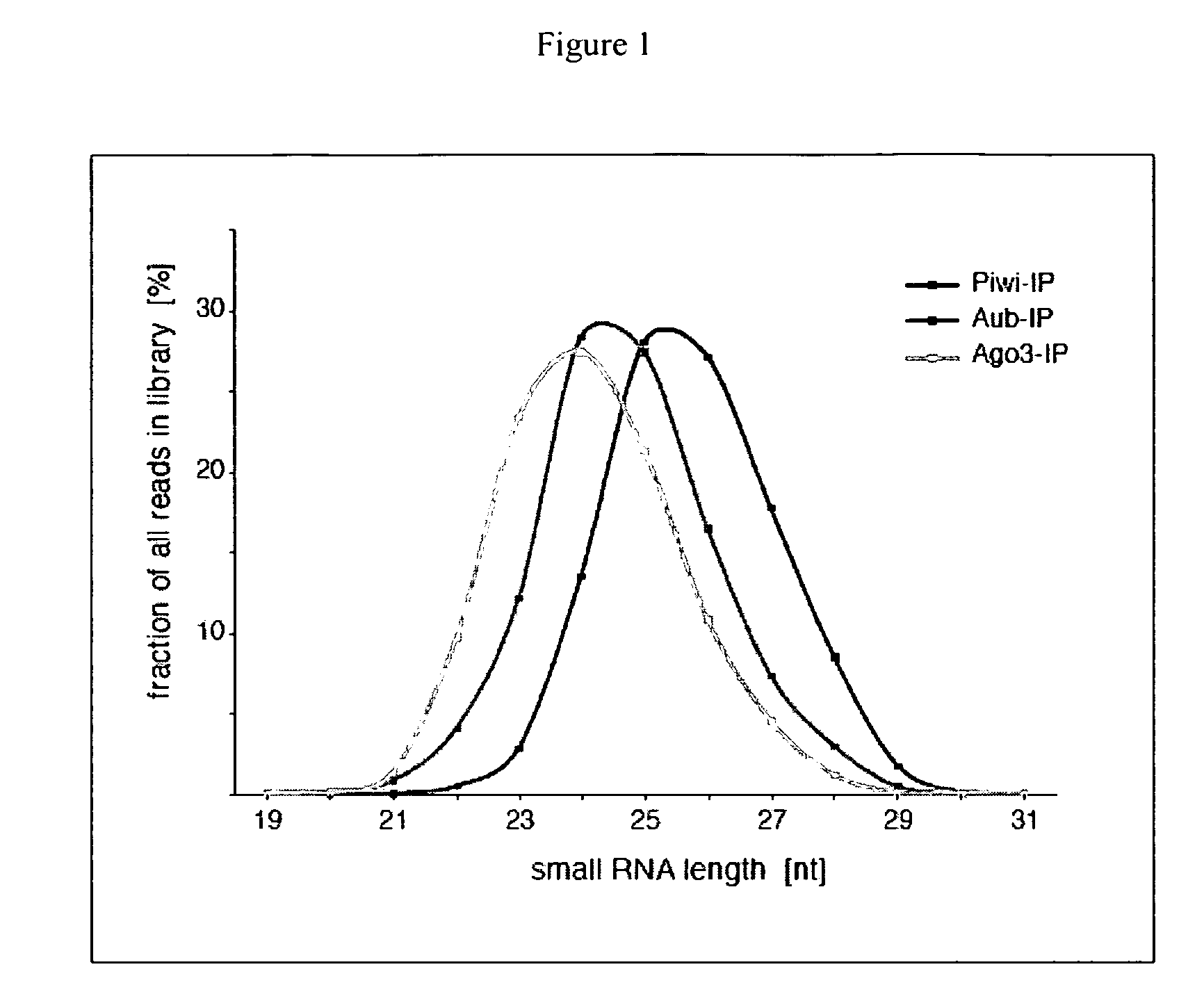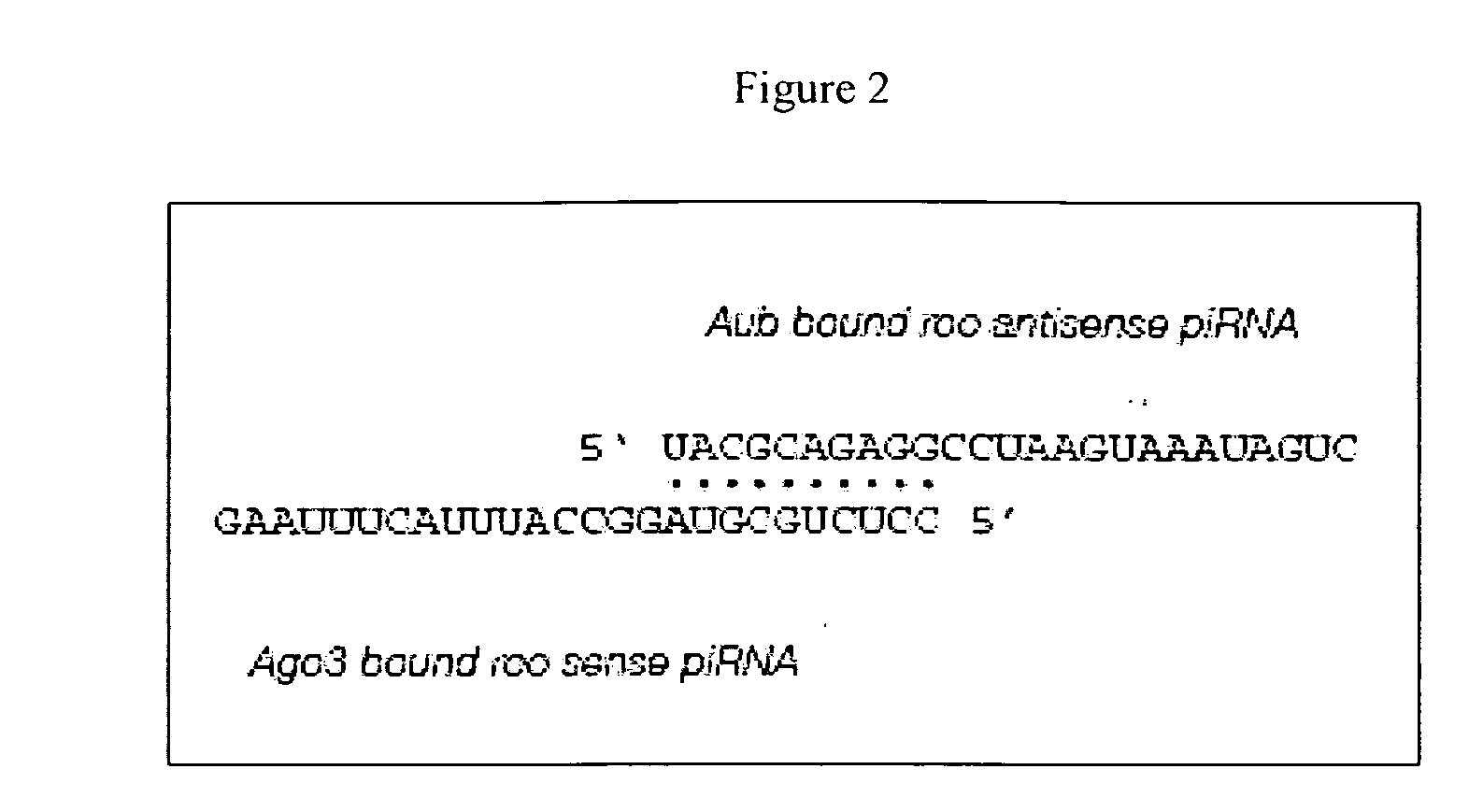piRNA and uses related thereto
a technology applied in the field of pirna and uses related thereto, can solve the problems of self-imposed limitation of p-element activity, substantial mutational burden of transposon activity,
- Summary
- Abstract
- Description
- Claims
- Application Information
AI Technical Summary
Benefits of technology
Problems solved by technology
Method used
Image
Examples
examples
[0236]The invention now being generally described, it will be more readily understood by reference to the following examples, which are included merely for purposes of illustration of certain aspects and embodiments of the present invention, and are not intended to limit the invention.
[0237]In order to probe mechanisms of transposon control in Drosophila and to illuminate similarities and differences between Piwi protein function in flies and mammals, Applicants first undertook a detailed analysis of small RNAs associated with three members of the Piwi clade in the Drosophila female germline. The results are presented in Examples I-VI below. These results indicate that the three Drosophila Piwi family members function in a transposon surveillance pathway that not only preserves a genetic memory of transposon exposure but also has the potential to adapt its response upon contact with dispersed and potentially active transposon copies.
example i
Piwi Family Members Have Distinct Expression Patterns in Drosophila Ovaries
[0238]In Drosophila, the Piwi-clade of Argonaute proteins consists of the three family members Piwi, Aubergine (Aub) and Ago3. In contrast to the euchromatic and well studied aub and piwi genes, the predicted ago3 gene (CG40300) resides in the pericentromeric heterochromatin of chromosome 3L (cytological position 80F). Although germline enriched expression of ago3 has been demonstrated by in situ hybridization (Williams and Rubin, 2002), an experimentally determined sequence of the Ago3 protein has not been reported. As a prelude to further studies of this family member, we sequenced several available ago3 cDNAs, the longest of which (RE57814) corresponds to a 2.7 kb cDNA originating from a 133 kb locus. This contains a presumably complete open reading frame of 867 amino acids, which encodes the PAZ and PIWI domains that are a signature of this family (FIG. 3).
[0239]Armed with the complete coding sequence of...
example ii
Drosophila piRNAs are Derived from Discrete Genomic Loci
[0255]The small RNA sequence data obtained from the three Piwi complexes is consistent with previous reports that have proposed a role for these proteins in transposon regulation (Saito et al., 2006; Vagin et al., 2006). We wished to exploit the depth of our sequence analysis to investigate how the small RNA-based transposon control program is established. Potentially, transcripts from every transposon could serve as templates for the production of small RNAs. This is the likely model through which plants silence transposons, via a mechanism that depends upon RNA-dependent RNA polymerases to generate dsRNA silencing triggers. Alternatively specialized transposon control regions could produce piRNAs whose complementarity with transposons allows efficient silencing of dispersed elements in trans. It was therefore essential to understand the genomic origin of the Drosophila piRNAs.
[0256]In Drosophila, intact and potentially active...
PUM
| Property | Measurement | Unit |
|---|---|---|
| pH | aaaaa | aaaaa |
| pH | aaaaa | aaaaa |
| diameters | aaaaa | aaaaa |
Abstract
Description
Claims
Application Information
 Login to View More
Login to View More - R&D
- Intellectual Property
- Life Sciences
- Materials
- Tech Scout
- Unparalleled Data Quality
- Higher Quality Content
- 60% Fewer Hallucinations
Browse by: Latest US Patents, China's latest patents, Technical Efficacy Thesaurus, Application Domain, Technology Topic, Popular Technical Reports.
© 2025 PatSnap. All rights reserved.Legal|Privacy policy|Modern Slavery Act Transparency Statement|Sitemap|About US| Contact US: help@patsnap.com



